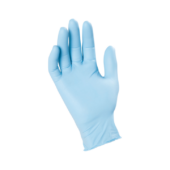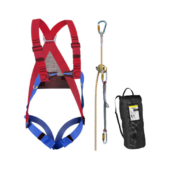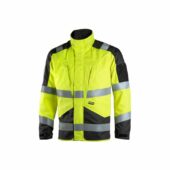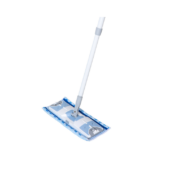Disposable overalls are essential for construction workers across Europe, providing protection against dust, chemicals, and other hazardous materials. Choosing the right disposable overalls requires an understanding of the material types, protection levels, standards, and specific working conditions. This guide offers insights on how to select the most suitable disposable overalls for construction, helping businesses ensure worker safety and compliance with European standards.
Why Use Disposable Overalls in Construction?
People who work in construction are exposed to many things that can be damaging, such as concrete dust and chemicals. Disposable dungarees add an extra layer of protection and have perks such as
- Prevention of Contamination: Helps prevent workers from carrying dust, dirt, and chemicals outside of the worksite.
- Improved Safety: Protects skin from hazardous materials, minimizing risks of injury or irritation.
- Enhanced Comfort: Lightweight and breathable materials ensure that workers stay comfortable during prolonged use.
- Convenience and Cost-Effectiveness: Disposable overalls can be discarded after use, reducing the need for extensive cleaning and maintenance.
For safety reasons and to follow the rules, building managers and workers must choose the right type of disposable dungarees.
Key Considerations for Choosing Disposable Overalls
It is important to think about a lot of things when choosing disposable dungarees, such as the types of hazards that are present, the amount of protection that is needed, comfort and EU compliance.
1. Determine the Level of Protection Needed
European Personal Protective Equipment (PPE) standards divide disposable dungarees into groups based on the amount of protection they offer. When you know these differences, you can choose the right type based on the risks on a building site.
- Type 1 (Gas-Tight): Provides protection against gaseous chemicals and is mostly used in high-risk chemical industries rather than typical construction environments.
- Type 2 (Non-Gas-Tight): Protects against liquid and gaseous chemicals with partial gas-tight properties, though this type is uncommon in standard construction.
- Type 3 (Liquid-Tight): Suitable for environments with exposure to pressurized liquid chemicals, offering reliable protection against hazardous liquid splashes.
- Type 4 (Spray-Tight): Designed for resistance against liquid aerosols and sprays, often used in construction sites with low-level chemical exposure.
- Type 5 (Particle-Tight): Commonly used in construction as it protects against airborne particles, including dust, asbestos fibers, and other contaminants.
- Type 6 (Limited-Splash Protection): Suitable for low-risk environments, providing basic protection against light sprays and splashes, often used in general maintenance and cleaning.
2. Material Types and Breathability
The material of throwaway overalls is very important for how comfortable, breathable and safe they are. Some common materials are:
- Polyethylene (PE): Known for durability and resistance to chemicals, PE is commonly used in overalls for protection against hazardous particles and liquid sprays.
- Polypropylene (PP): A lightweight, breathable option suitable for low-hazard environments. PP overalls provide basic protection against dust and light splashes.
- Polyester-Based Laminates: Often used in higher-grade overalls for chemical protection, laminates offer a balance between durability and flexibility.
For long wear, think about overalls with breathable back panels or specific venting systems. These features increase air flow, thereby lessening pain over extended shifts.
3. Compliance with European Standards
Disposable overalls used in Europe have to comply with the Personal Protective Equipment Regulation (EU) 2016/425 and satisfy EN ISO requirements pertinent to protective gear. Important criteria to search for consist in:
- EN 13982-1 (Type 5): Protection against airborne solid particles, applicable for environments with dust or fiber exposure.
- EN 13034 (Type 6): Limited splash protection, ideal for construction sites with occasional exposure to light chemicals.
- EN 14605 (Type 3/4): For liquid-tight and spray-tight garments, required for higher-risk situations involving hazardous chemicals.
- EN 1149-5: Anti-static protection, necessary for sites where there is a risk of static discharge igniting flammable materials.
- EN 1073-2: Provides protection against radioactive particles, beneficial for specialized environments or projects in contaminated areas.
4. Size and Fit
Ensuring mobility and comfort on-site depends on correct fit. Particularly in jobs requiring bending, lifting or squatting, disposable dungarees should fit comfortably without restricting movement.
- Most manufacturers offer sizing charts depending on waist, chest, and height measurements. Choosing the correct size guarantees more coverage and reduces the possibility of tearing.
- Elastic Features: Overalls with elastic cuffs at the wrists, ankles, and waist provide a more secure fit and reduce the entry of particles or splashes.
- Designs with hoods: Overalls with hoods protect the head and neck even more, which is helpful in places where there are dust or debris in the air.
5. Durability and Usage Duration
Many times including heavy-duty labour, construction work can cause faster wear and tear on throwaway overalls. Consider: before choosing a product:
- Thickness and Fabric Strength: Higher-grade materials provide better resistance to tearing, punctures, and abrasion.
- Single-Use vs. Limited Reuse: Some disposable overalls are designed for single-use, while others can be used for a limited number of times, provided they remain undamaged and uncontaminated.
- Seam Strength: Reinforced seams enhance durability, reducing the risk of ripping during movement or high-stress activities.
6. Comfort and Ergonomics
Work effectiveness and safety standards must be met while being comfortable. Employees are more likely to regularly wear PPE that fits well and doesn’t get in the way of their movements.
- Breathable Materials: Opt for overalls with ventilation or breathable materials, especially for warmer environments.
- Ergonomic Design: Look for features like flexible crotch areas and gussets that improve range of motion.
- Lightweight Construction: Lighter fabrics are generally more comfortable for extended periods, reducing worker fatigue.
7. Cost and Supplier Reliability
Although budget is a factor, it’s crucial to make sure the selected dungarees satisfy safety criteria. Choose a supplier by considering:
- Certifications and Compliance: Confirm that the supplier meets EU safety standards for protective equipment.
- Reputation and Reviews: Choose suppliers with positive feedback, particularly in terms of product durability, comfort, and adherence to regulatory standards.
- Bulk Purchase Options: Buying in bulk often reduces the cost per unit, especially for large projects with significant PPE needs.
Types of Disposable Overalls for Construction Applications
Protective gear needs to be different for each type of building work. Here is a quick list of common kinds of disposable dungarees and what they are used for:
- Dust-Proof Overalls (Type 5): These are ideal for tasks like insulation installation or cutting concrete, where dust exposure is a primary concern.
- Liquid-Resistant Overalls (Type 4/6): Suitable for handling paints, adhesives, or tasks involving liquid splashes.
- Chemical-Resistant Overalls (Type 3): Best for higher-risk environments where there is exposure to pressurized chemicals or hazardous sprays.
Maintenance and Disposal Guidelines
Even though overalls are throwaway, they need to be used and thrown away properly for safety and environmental reasons.
- Usage Guidelines: Dispose of overalls immediately after exposure to hazardous substances, especially chemicals.
- Disposal Requirements: Follow local regulations for disposing of PPE contaminated with hazardous materials.
- Storage Tips: Store disposable overalls in a clean, dry area to prevent damage before use.
Ensuring Compliance and Worker Safety
Compliance with European safety standards and regulations is crucial for businesses. Regular training sessions on PPE usage, combined with a strict PPE compliance protocol, can ensure worker safety.
Training and Education
Teach people how to use, store and get rid of throwaway dungarees the right way. What workers should know:
- How to correctly put on and remove overalls to avoid contamination.
- When to replace PPE, especially after contamination or damage.
- The importance of proper fit and checking for tears or damage before use.
Conduct Regular Safety Audits
Set up regular checks to make sure that PPE rules are followed on-site. Audits help find any holes in the use of PPE and make sure that all of it, including throwaway dungarees, meets the standards that are needed.
Supplier Verification
Confirm that suppliers meet European standards for PPE manufacturing and that their products have valid certifications. This helps in minimizing risks associated with substandard protective equipment.
Conclusion
Picking the right disposable dungarees for building is an important part of keeping the workplace safe. Companies that build things can make sure that their workers are safe on the job site by checking the amount of protection, the quality of the materials, the fit, the comfort, and that the safety standards meet European requirements. When chosen and maintained correctly, PPE makes the workplace safer and more efficient, which helps building projects go smoothly and protects workers’ health.
For construction managers and health and safety officers, selecting high-quality disposable overalls from trusted suppliers will not only ensure regulatory compliance but also contribute to a culture of safety and responsibility within the workplace.

















